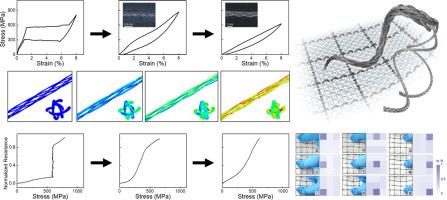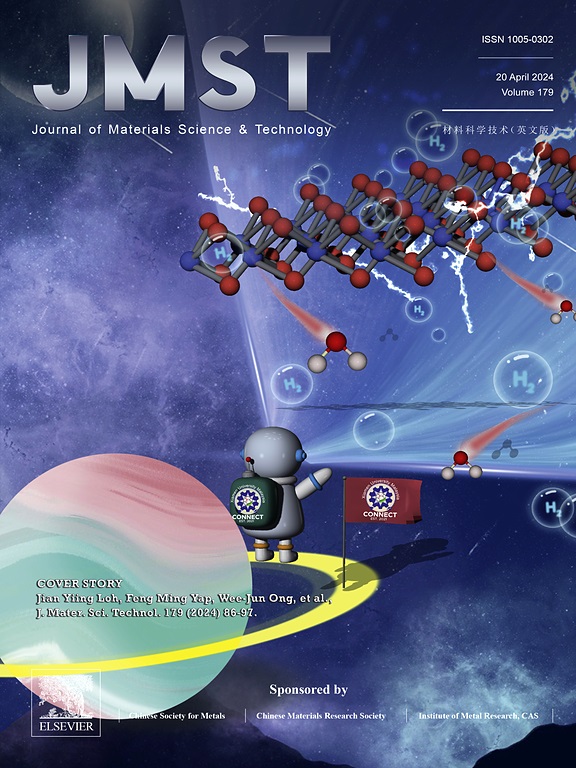Braided NiTi alloys microfilaments with near-linear responses: toward flexible high-pressure sensors
IF 11.2
1区 材料科学
Q1 MATERIALS SCIENCE, MULTIDISCIPLINARY
引用次数: 0
Abstract
Shape memory alloys (SMAs) are smart materials with superelasticity originating from a reversible stress-induced martensitic transformation (MT) accompanied by a significant electrical resistance change. However, the stress-strain and resistance-stress relationships of typical NiTi wires are non-linear due to the stress plateau during the stress-induced MT. This limits the usage of these materials as pressure sensors. Herein, we propose a high-strength flexible sensor based on superelastic NiTi wires that achieves near-linear mechanical and electrical responses through a low-cost double-braided strategy. This micro-architectured strategy reduces or even eliminates stress plateau and it is demonstrated that the phase transformation of microfilaments can be controlled: regions with localized stress undergo the MT first, which is successively followed by the rest of the microfilament. This structure-dependent MT characteristic exhibits slim-hysteresis superelasticity and tunable low stiffness, and the braided wire shows improved flexibility. The double-braided NiTi microfilaments exhibit stable electrical properties and repeatability under approximately 600 MPa (8% strain) and can maintain stability over a wide temperature range (303–403 K). Moreover, a cross-grid flexible woven sensor array textile based on microfilaments is further developed to detect pressure distribution. This work provides insight into the design and application of SMAs in the field of flexible and functional fiber.

形状记忆合金(SMA)是一种智能材料,其超弹性源于可逆的应力诱导马氏体转变(MT),同时伴有显著的电阻变化。然而,由于应力诱导马氏体转变过程中存在应力高原,典型镍钛合金丝的应力-应变和电阻-应力关系是非线性的。这限制了这些材料作为压力传感器的应用。在此,我们提出了一种基于超弹性镍钛丝的高强度柔性传感器,通过低成本的双编织策略实现了近乎线性的机械和电气响应。这种微架构策略降低甚至消除了应力高原,并证明了微丝的相变是可控的:局部应力区域首先发生 MT,然后微丝的其余部分相继发生 MT。这种与结构相关的 MT 特性表现出纤细滞后的超弹性和可调的低刚度,编织线也显示出更好的柔韧性。双编织镍钛微丝在大约 600 兆帕(8% 应变)的条件下表现出稳定的电气性能和可重复性,并能在较宽的温度范围(303-403 K)内保持稳定。此外,还进一步开发了一种基于微丝的交叉网格柔性编织传感器阵列纺织品,用于检测压力分布。这项研究为 SMA 在柔性功能纤维领域的设计和应用提供了深入的见解。
本文章由计算机程序翻译,如有差异,请以英文原文为准。
求助全文
约1分钟内获得全文
求助全文
来源期刊

Journal of Materials Science & Technology
工程技术-材料科学:综合
CiteScore
20.00
自引率
11.00%
发文量
995
审稿时长
13 days
期刊介绍:
Journal of Materials Science & Technology strives to promote global collaboration in the field of materials science and technology. It primarily publishes original research papers, invited review articles, letters, research notes, and summaries of scientific achievements. The journal covers a wide range of materials science and technology topics, including metallic materials, inorganic nonmetallic materials, and composite materials.
 求助内容:
求助内容: 应助结果提醒方式:
应助结果提醒方式:


